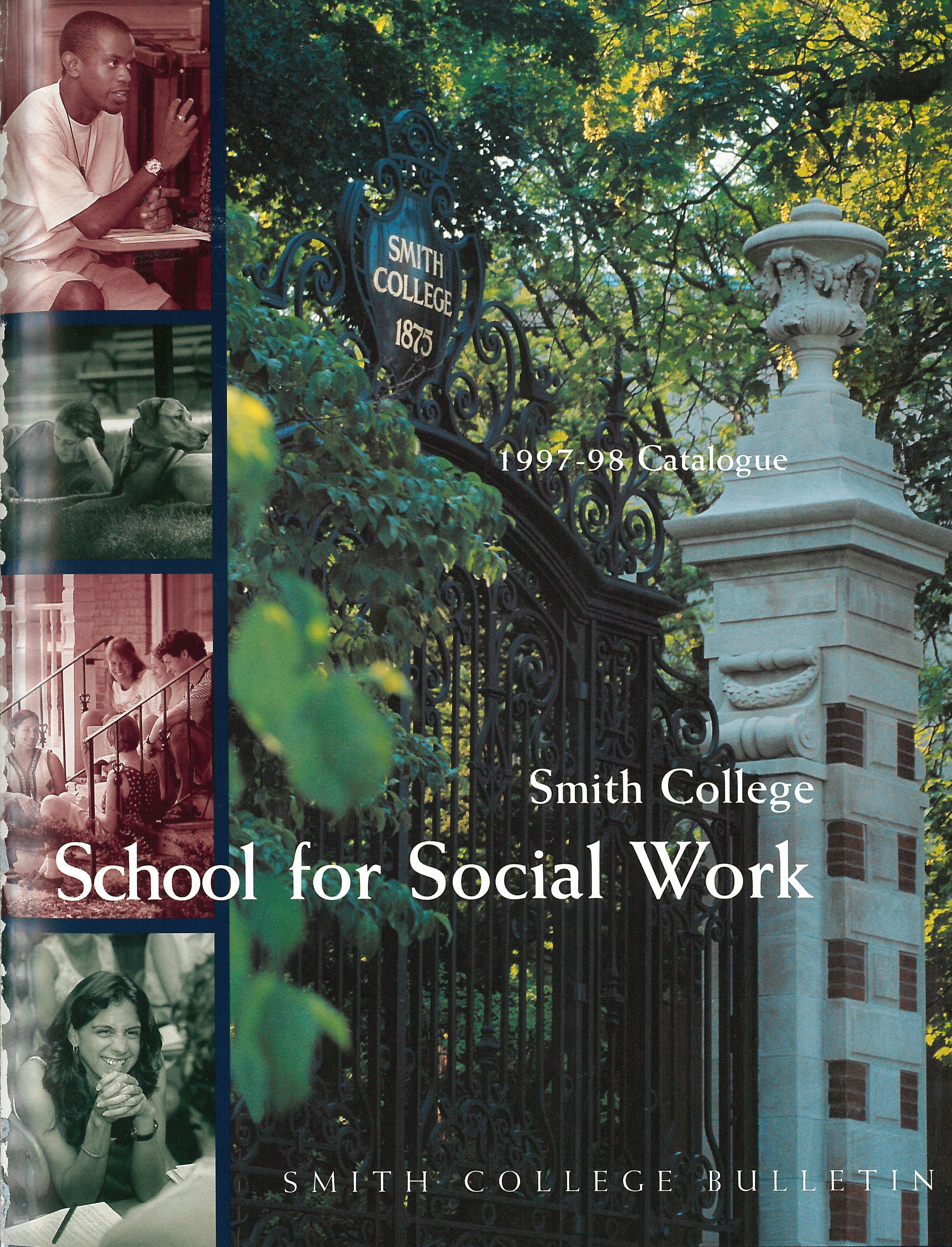[et_pb_section bb_built=”1″ admin_label=”section” background_image=”https://sites.smith.edu/ssw100-history/wp-content/uploads/sites/256/2018/05/1997-98-Catalogue-cover.jpg” background_color=”rgba(0,62,81,0.55)” parallax_method=”off” next_background_color=”#ffffff” custom_padding_tablet=”50px|0|50px|0″ custom_padding_last_edited=”on|desktop” _builder_version=”3.2.2″ background_blend=”overlay” background_position=”bottom_center”][et_pb_row admin_label=”row” background_position=”top_left” background_repeat=”repeat” background_size=”initial”][et_pb_column type=”1_3″][/et_pb_column][et_pb_column type=”2_3″][et_pb_divider color=”#ffffff” show_divider=”off” height=”200″ divider_style=”solid” divider_position=”top” hide_on_mobile=”on” disabled_on=”on|on|off” _builder_version=”3.2.2″ /][et_pb_post_title _builder_version=”3.2.2″ meta=”off” featured_image=”off” text_color=”light” title_font_size=”50px” title_line_height=”1.2em” /][/et_pb_column][/et_pb_row][/et_pb_section][et_pb_section bb_built=”1″ _builder_version=”3.2.2″ prev_background_color=”rgba(0,62,81,0.55)”][et_pb_row][et_pb_column type=”1_3″][et_pb_text _builder_version=”3.2.2″]
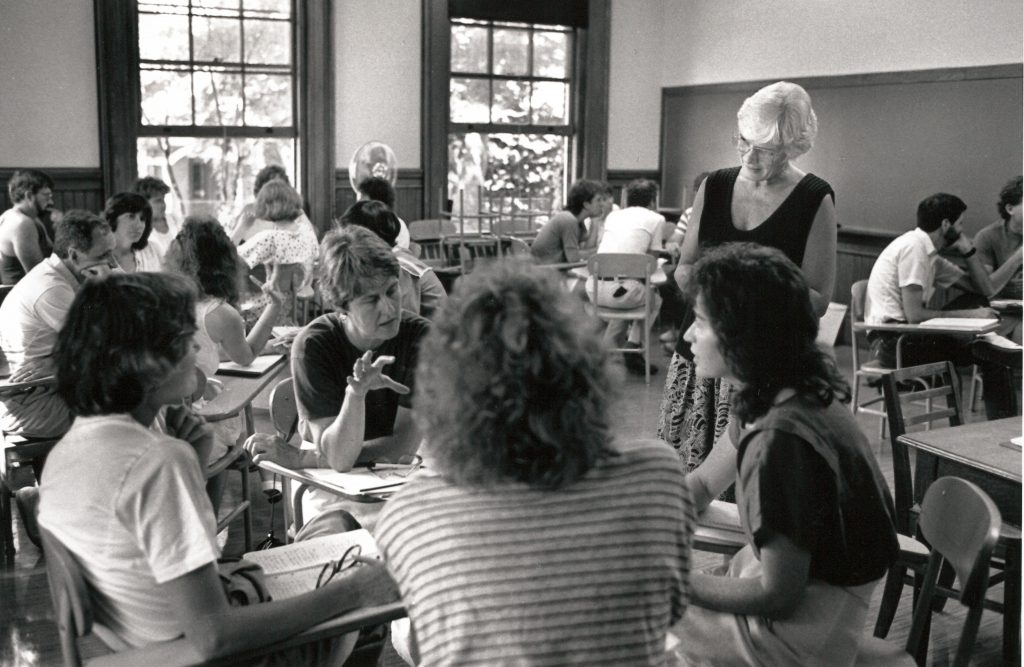
[/et_pb_text][/et_pb_column][et_pb_column type=”2_3″][et_pb_text _builder_version=”3.2.2″ header_2_line_height=”1.2em” header_3_font_size=”18px” header_3_text_color=”#003e51″ header_2_text_color=”#003e51″ header_2_font_size=”24px” text_font_size=”20″ text_font_size_phone=”14″ text_font_size_last_edited=”on|phone”]
How did the School for Social Work change and develop over its first 100 years? How did its admissions standards changed? How about the length of the program, the required courses, and the type of degree? When did different students groups and the alumni association form?
[/et_pb_text][et_pb_text _builder_version=”3.2.2″]
Drawing on the official SSW Bulletin (aka catalog of courses), this page provides answers to those questions.
For a more detailed look at how one particular set of courses changed over the century, see “The Racism Course.”
[/et_pb_text][/et_pb_column][/et_pb_row][et_pb_row][et_pb_column type=”1_3″][et_pb_text admin_label=”1918″ _builder_version=”3.2.2″]
1918
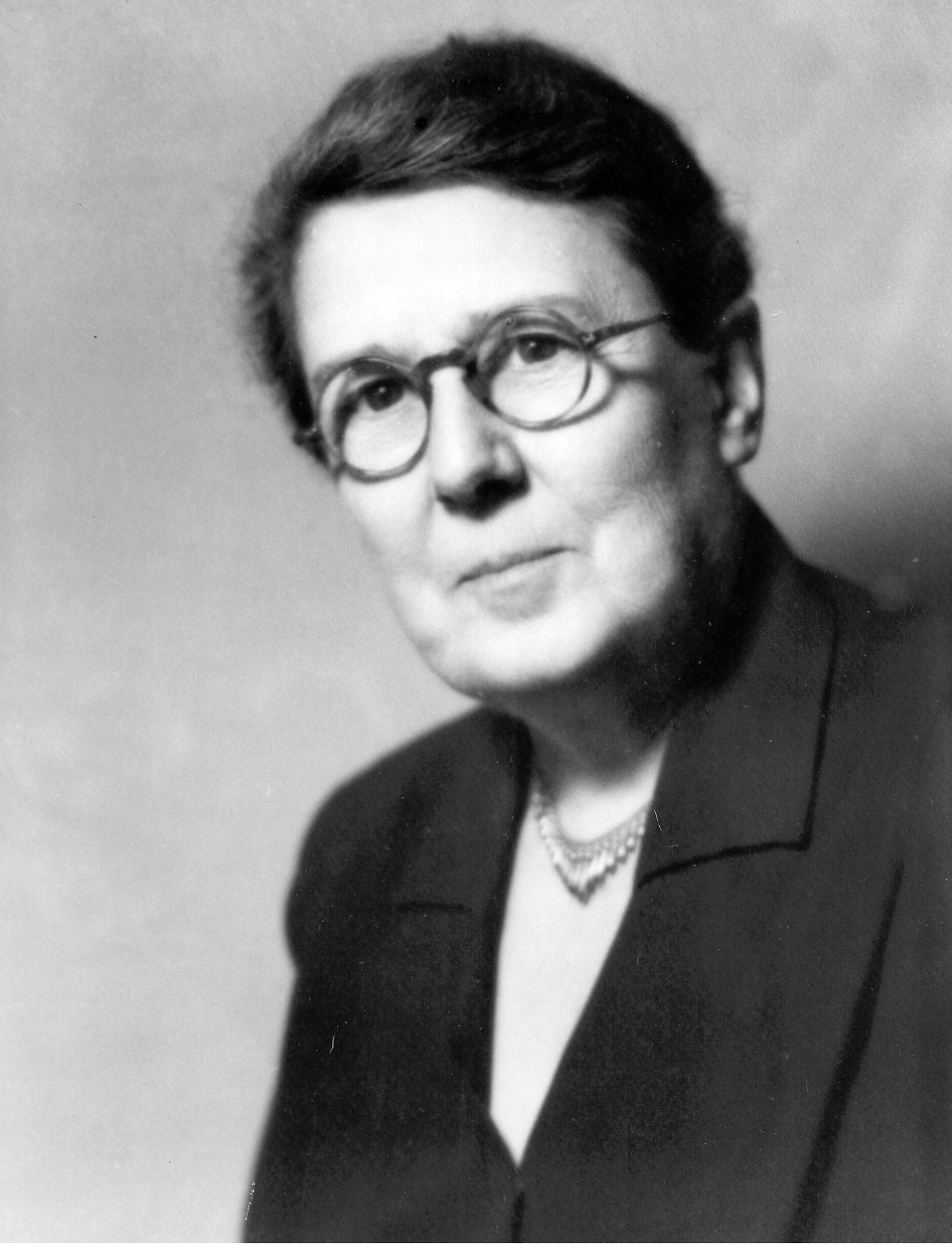
[/et_pb_text][/et_pb_column][et_pb_column type=”2_3″][et_pb_text admin_label=”1918 Text need” _builder_version=”3.2.2″]
For the inaugural session, Mary Jarrett outlined her expectations in an informational brochure.
Admission: Agreement to complete entire course. “The school is open to college graduates and other persons who have had an equivalent technical training.” Potential applicants are requested to take into account whether they would prefer to help in the mental hygiene of the invalided soldier through the medium of a specialized and advanced training in neuropsychiatric social work (as here
designed). or whether they would prefer to work as occupational therapeutists (in which case they should apply to schools of occupational therapy), or whether they would prefer to work in the specialized nursing field (in which case they should apply to schools of nursing), or whether they would prefer to work in psychological examining (in which case they should apply to departments of psychclogy [sic] giving appropriate courses) This course does not contemplate training occupation teachers, nurses, or psycholoigists, although some work in these fields will be offered for the general culture of the students and for their better understanding of the practical hospital and community problems which they will face if chosen by authority for practical work.
Length: Total of 8 months with summer courses from July 8th to August 31st and six months of “practice work” following.
Degree: A certificate for completion of the course will be granted by the special committee of the National Committee for Mental Hygiene, under whose auspices the school is established.
Content: “The major studies in the course will be sociology, including methods of social case work, psychology, and social psychiatry. Minor studies will include hygiene, occupational therapy, military usage, and the writing of records and reports.
[/et_pb_text][/et_pb_column][/et_pb_row][et_pb_row][et_pb_column type=”4_4″][et_pb_divider _builder_version=”3.2.2″ /][/et_pb_column][/et_pb_row][et_pb_row][et_pb_column type=”1_3″][et_pb_text admin_label=”1919-23″ _builder_version=”3.2.2”]
1919-1923
Director F. Stuart Chapin
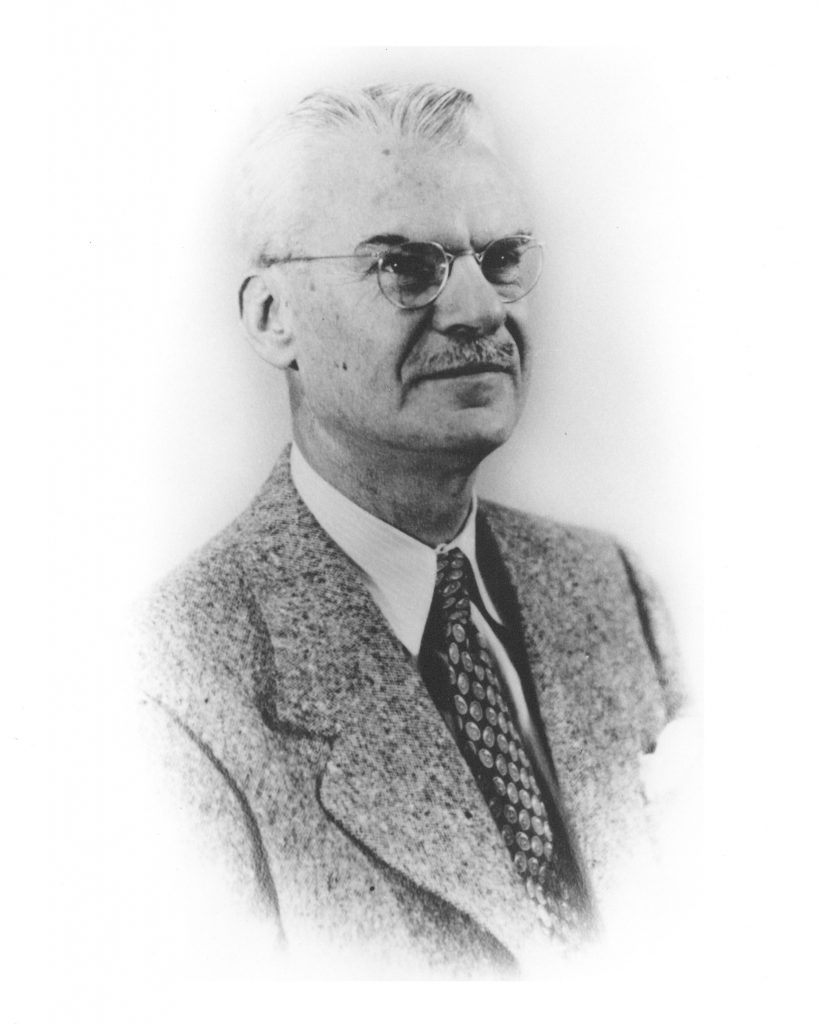
[/et_pb_text][/et_pb_column][et_pb_column type=”2_3″][et_pb_text admin_label=”1919 Text” _builder_version=”3.2.2″]
Admission standards reflected the fact that many social workers had trained on the job and many women did not have college degrees. The first decade or so did not verbally limit the course to women, perhaps because it was assumed.
“The training courses in Psychiatric Social Work, in Medical Social Work, and in Community Service are open to graduates of colleges of approved standing and to a few exceptional persons of equivalent preparation.”
This description of the school’s teaching methods stay in the bulletin for decades:
The school employs the newer methods of training for social work. First, the psychological approach to social problems is emphasized in all of its courses; second, students are made acquainted with the applications of the scientific method in sciences bearing upon social problems–biology, psychology, sociology, psychiatry, and medicine; third, emphasis is laid on the discussion method of teaching rather than the use of the usual lecture system, in an endeavor to train for fearless and resourceful thinking about social problems; and fourth, the intense group life of the students in college dormitories and in continual association with their instructors permits high degree of concentration.
Calendar
Each student took 3 sessions–two summers and one winter field internship.
[/et_pb_text][/et_pb_column][/et_pb_row][et_pb_row][et_pb_column type=”4_4″][et_pb_divider _builder_version=”3.2.2″ /][/et_pb_column][/et_pb_row][et_pb_row][et_pb_column type=”1_3″][et_pb_text admin_label=”1923-1941″ _builder_version=”3.2.2″]
1923-1941
Director Everett Kimball, Associate Directors Bertha Capen Reynolds (1925-1938) and Annette Garrett (1935-1957)
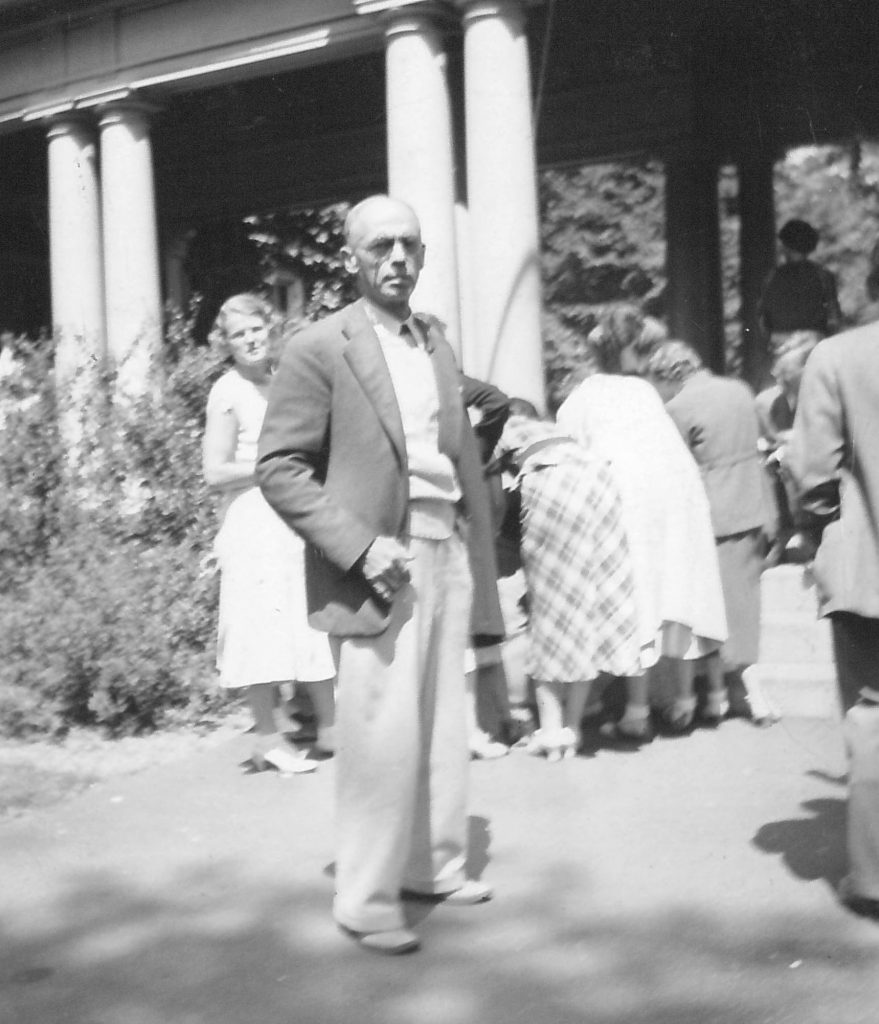
[/et_pb_text][et_pb_text _builder_version=”3.2.2″]
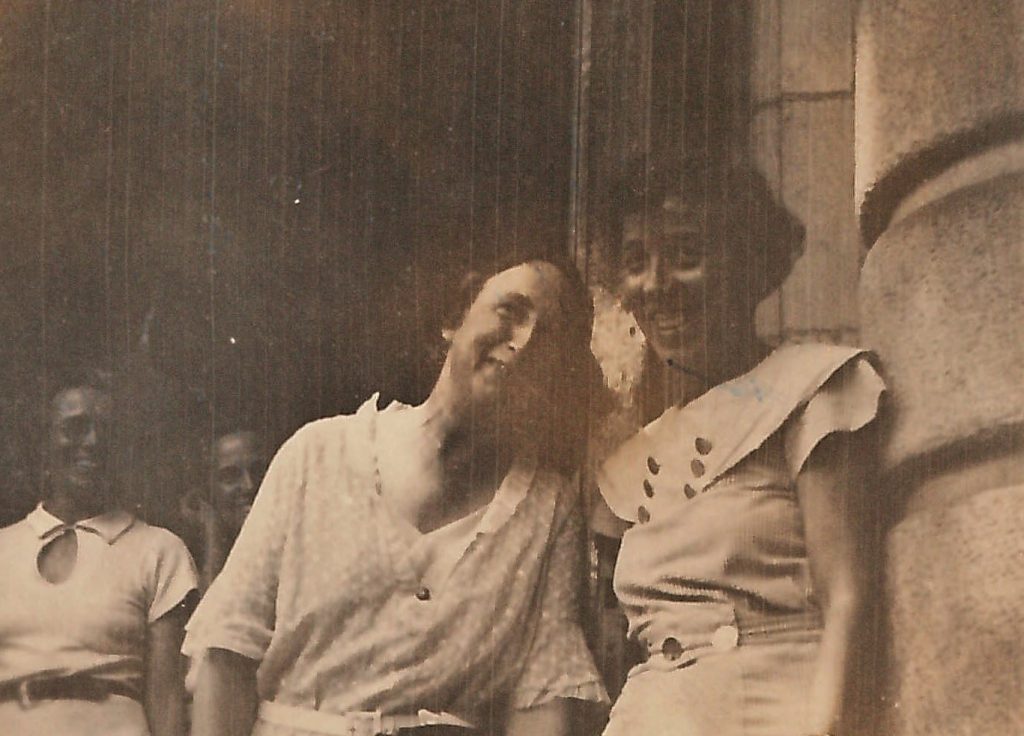
[/et_pb_text][/et_pb_column][et_pb_column type=”2_3″][et_pb_text _builder_version=”3.2.2″]
1927: Formalized M.S.S. degree (previously graduates received a “diploma”)
1928: Formalized thesis requirement
1930s: Bertha Capen Reynolds petitions Kimball to admit black students, promising to take on any extra work that might arise because it was more difficult to find placements for black students in Jim Crow America.
1933: Admissions language formalized gender requirement; i.e. it changed from “open to graduates” to “open to women graduates”
1933: Introduces Plan A (five sessions) and Plan B (which maintained three sessions). Plan C is for students only present for a single summer, like the Continuing Education Seminars later in the century. Summer sessions are 8 weeks long and winter field internships are 10 months long.
1935: Bertha Capen Reynolds developed and launched Plan D to train supervisors of social work students.
1938: Kimball canceled Plan D at the end of summer 1938 and strongly encouraged Bertha Capen Reynolds to resign. Despite the end of Plan D, SSW continues to offer courses for graduates of M.S.S. programs. These courses eventually became the Program for Advanced Standing and then the Ph.D. program.
1939: An Alumnae Association and the Student Organization appear in the Bulletin for the first time.
[/et_pb_text][/et_pb_column][/et_pb_row][et_pb_row][et_pb_column type=”4_4″][et_pb_divider _builder_version=”3.2.2″ /][/et_pb_column][/et_pb_row][et_pb_row][et_pb_column type=”1_3″][et_pb_text admin_label=”1943-56 Florence Day” _builder_version=”3.2.2″]
1943-56
Director Florence Day, Associate Director Annette Garrett
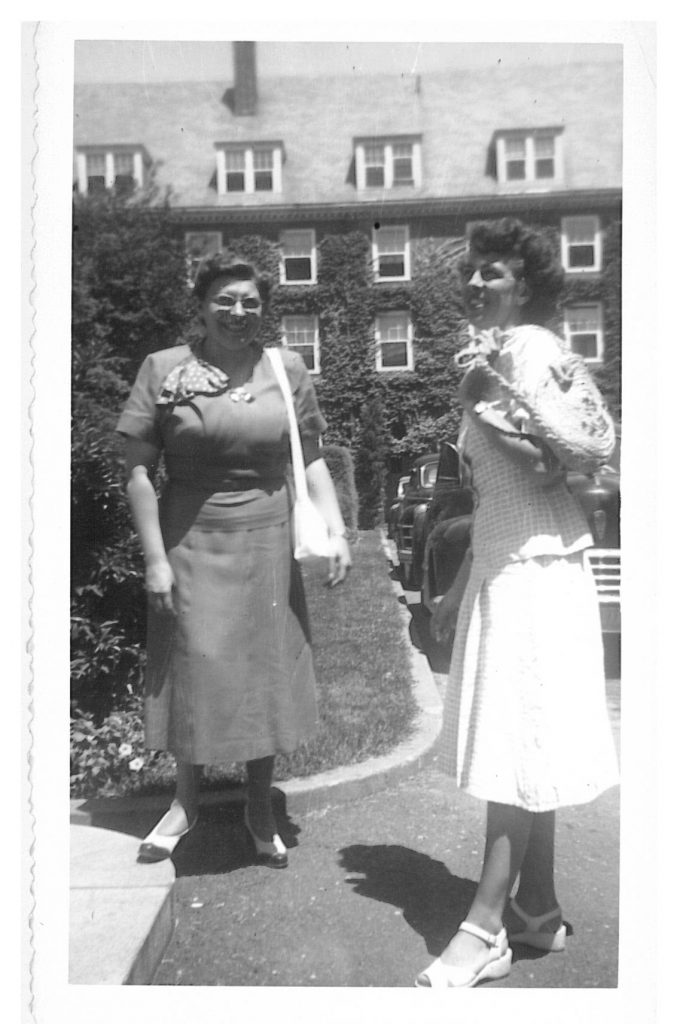
[/et_pb_text][/et_pb_column][et_pb_column type=”2_3″][et_pb_text admin_label=”text” _builder_version=”3.2.2″]
1943-46: Florence Day decides to institute War Emergency accelerated program. All students take 3 sessions (two summers and one winter) to meet the war demand for social workers.
1945-1946: Day administration changes admission paragraph in two important ways.
- Men are included: “The Smith College School for Social Work is open to men and women graduates of approved colleges and universities.”
- They add this advice about the liberal arts: “Candidates are advised to pursue studies in sociology, anthropology, economics, government, and history; in addition, psychology, biology, and physiology. The developments in social work today portend that social workers must be implemented with a knowledge of these forces in our society if they are to take leadership in influencing the socio-economic changes which are taking place.”
1945-46: Admissions paragraph continues to include men
1946-47: Admissions paragraph puts an asterisk next to men, explaining that they can take the courses but not receive a degree because the Smith charter does not allow degrees to be conferred on men.
Ended the Accelerated Course and reinstated two different tracks, five session Plan A and three session Plan B. Summer sessions grow from 8 weeks to 10 weeks. Winter field internships decrease from 10 months to 9 months.
1948: Added prior graduate classes as one of the possible conditions leading to Plan B standing, in addition to sufficient experience.
Men disappear from admissions paragraph again
1951-52: Program of Advanced Study introduced
[/et_pb_text][/et_pb_column][/et_pb_row][et_pb_row][et_pb_column type=”4_4″][et_pb_divider _builder_version=”3.2.2″ /][/et_pb_column][/et_pb_row][et_pb_row][et_pb_column type=”1_3″][et_pb_text admin_label=”1956-1970 Parad” _builder_version=”3.2.2″]
1956-1970
Dean Howard Parad
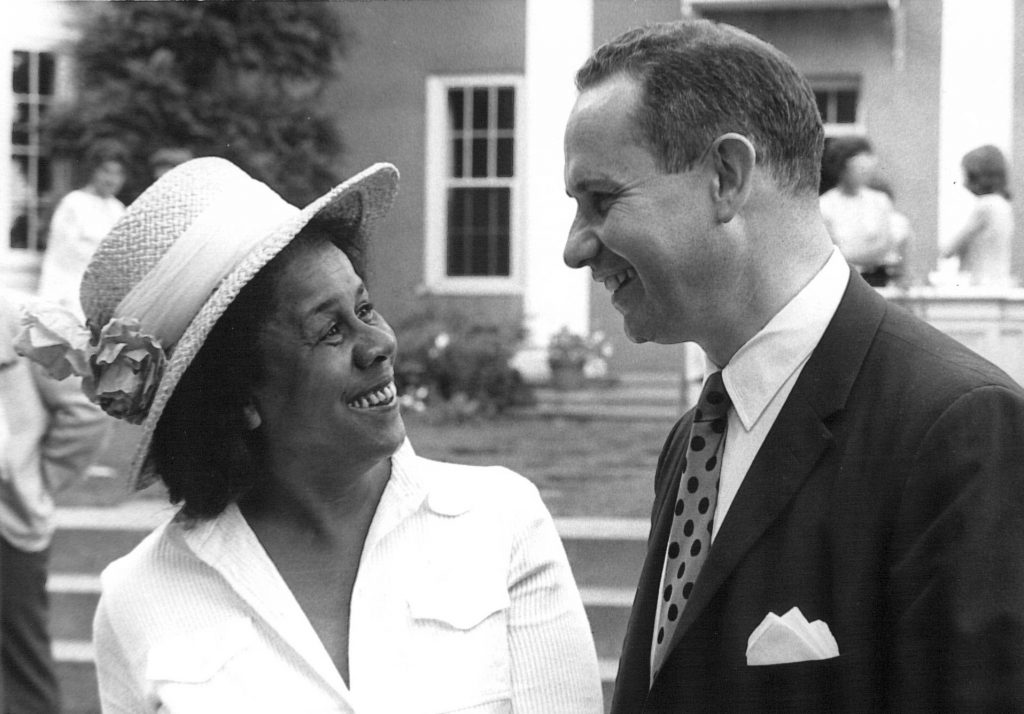
[/et_pb_text][/et_pb_column][et_pb_column type=”2_3″][et_pb_text admin_label=”text” _builder_version=”3.2.2″]
1961-62: The M.S.W. replaces the M.S.S.
1962-63: Doctoral Program begins
The Parad administration removed the line about changing socio-economic forces in the admissions paragraph and replace it with “Completion of approximately twenty semester hours in the social, biological, and psychological sciences is preferred. Applicants should feel free to exercise their own preferences in choosing an undergraduate major, with due regard for the importance of a broad and balanced liberal arts preparation.”
1963-64. The Program for Advanced Studies (PAS) became a third pre-doctoral year for qualified doctoral candidates, but also “continues in its present form for those who are not doctoral candidates.” Winter sessions change from 9 months long to 8 and a half.
1964-65: PAS becomes two separate programs: Third-year certificate and Doctor of Social Work (D.S.W.).
1965-66: Plan C removed from the Bulletin; Men appear again in admissions paragraph without an asterisk.
[/et_pb_text][et_pb_text _builder_version=”3.2.2″]

[/et_pb_text][et_pb_text _builder_version=”3.2.2″]
[/et_pb_text][/et_pb_column][/et_pb_row][et_pb_row][et_pb_column type=”4_4″][et_pb_divider _builder_version=”3.2.2″ /][/et_pb_column][/et_pb_row][et_pb_row][et_pb_column type=”1_3″][et_pb_text admin_label=”1971-1976″ _builder_version=”3.2.2″]
1971-1976
Kenneth H. McCartney, Acting Dean, 1971-72, Dean, 1972-76
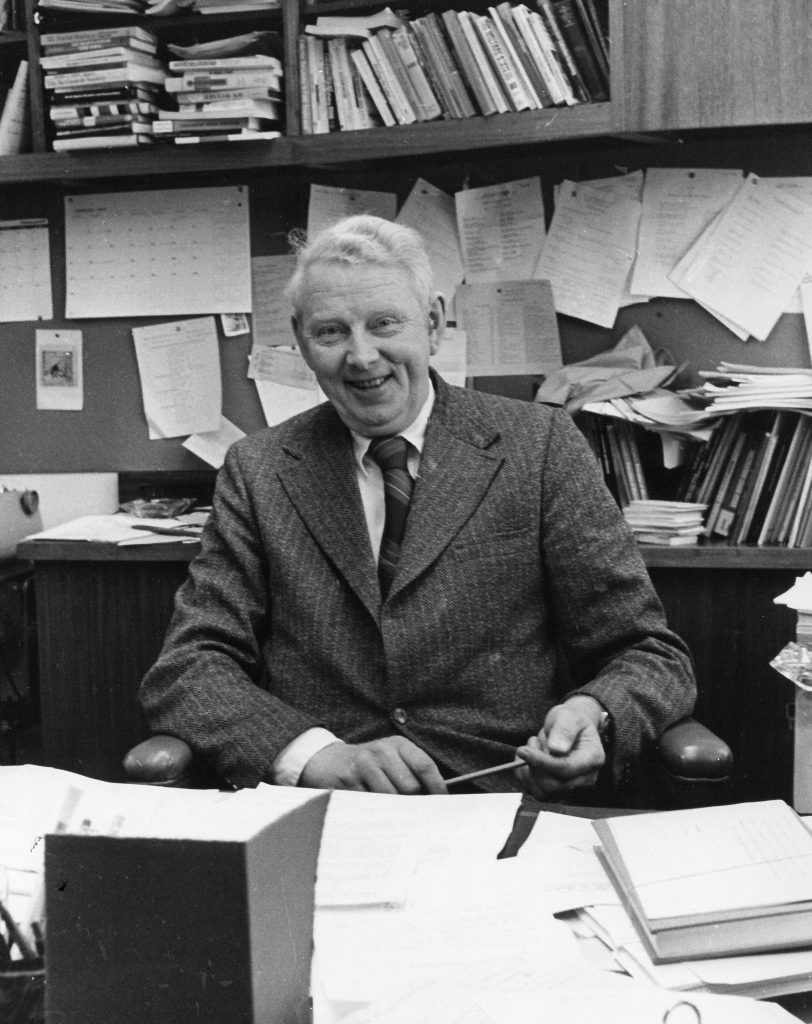
[/et_pb_text][/et_pb_column][et_pb_column type=”2_3″][et_pb_text admin_label=”text” _builder_version=”3.2.2″]
1973-74: Kenneth McCartney’s administration change the Parad-era admission paragraph to “The Committee seeks variety in the study body and encourages applications from students of various minority groups.”
[/et_pb_text][/et_pb_column][/et_pb_row][et_pb_row][et_pb_column type=”4_4″][et_pb_divider _builder_version=”3.2.2″ /][/et_pb_column][/et_pb_row][et_pb_row][et_pb_column type=”1_3″][et_pb_text admin_label=”1976-85″ _builder_version=”3.2.2″]
1976-85
Dean Katherine Gabel
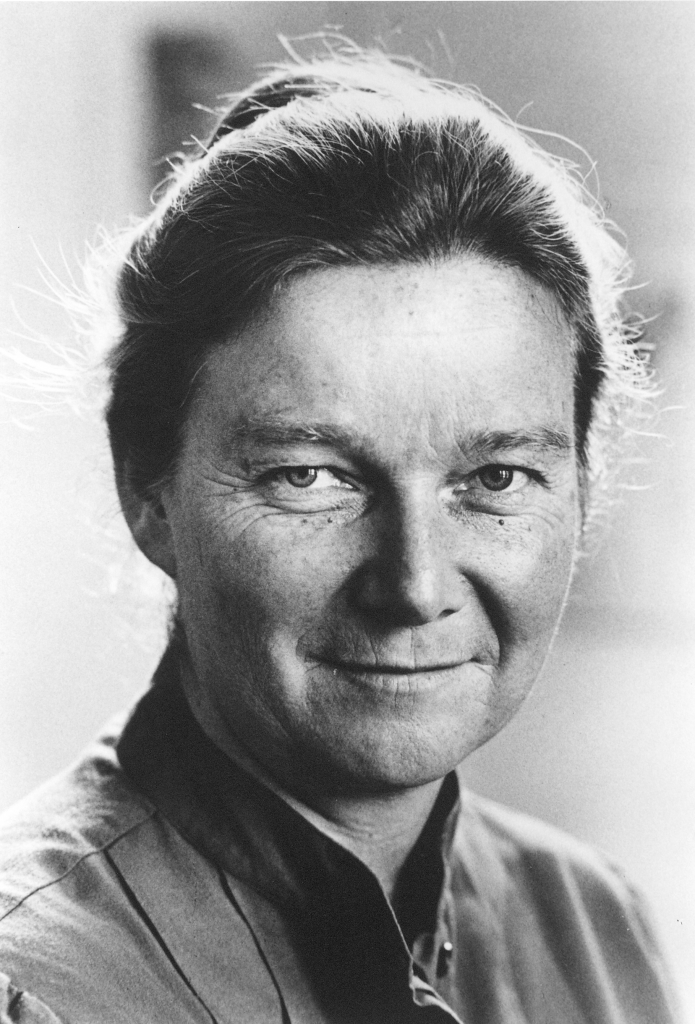
[/et_pb_text][/et_pb_column][et_pb_column type=”2_3″][et_pb_text admin_label=”text” _builder_version=”3.2.2″]
1979-80: Look of Catalogue changed dramatically, adding pictures. Program of Continuing Education added. Student Org had been listed in all the Bulletins since the 1920s. Joined in 1979 by “Third World Council” and “Feminist Alliance”
1980-81: Lesbian, Gay, Bisexual Alliance joines Student Organization, Third World Council, and Feminist Alliance in the Catalogue
Social Work Archive Organized
[/et_pb_text][et_pb_text _builder_version=”3.2.2″]
[/et_pb_text][et_pb_text admin_label=”Caption” _builder_version=”3.2.2″ module_class=”caption” saved_tabs=”all”]
Vida Simenas Grayson, “The Social Work Archive,” Smith Alumnae Quarterly, Fall 1983.
[/et_pb_text][/et_pb_column][/et_pb_row][et_pb_row][et_pb_column type=”4_4″][et_pb_divider _builder_version=”3.2.2″ /][/et_pb_column][/et_pb_row][et_pb_row][et_pb_column type=”1_3″][et_pb_text admin_label=”1986-1994″ _builder_version=”3.2.2″]
1986-1994
Dean Ann Hartman, and Dorcas Bowles, Associate Dean, 1980-1990, Acting Dean, 1985-86
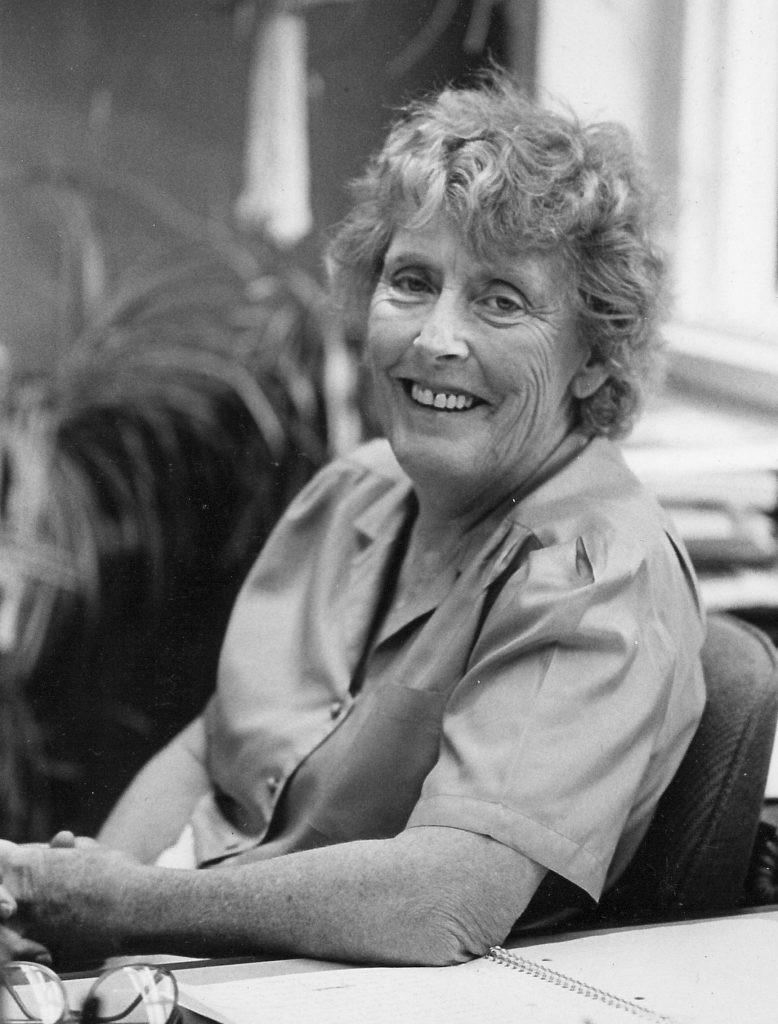
[/et_pb_text][/et_pb_column][et_pb_column type=”2_3″][et_pb_text admin_label=”text” _builder_version=”3.2.2″]
1988-89: Introduction of the Bachelor of Social Work (BSW) Advanced Standing Option for Plan A students with a bachelors in Social Work and 20 months of post-bacc experience in human services .
1989-90: Introduction of a Community Project during the first winter field placement of Plan A students. For the first time the Grading System is mentioned one way or another. It is described, “All academic work is graded on a Pass/Marginal Pass/Fail basis.”
1989-1995: Bulletin style changes dramatically. Removed statement about the history of the school and removed cost table. Removed statement on admission. Removed faculty list and field placement lists.
[/et_pb_text][/et_pb_column][/et_pb_row][et_pb_row][et_pb_column type=”4_4″][et_pb_divider _builder_version=”3.2.2″ /][/et_pb_column][/et_pb_row][et_pb_row][et_pb_column type=”1_3″][et_pb_text admin_label=”1995-2000″ _builder_version=”3.2.2″]
1995-2000
Dean Anita Lightburn
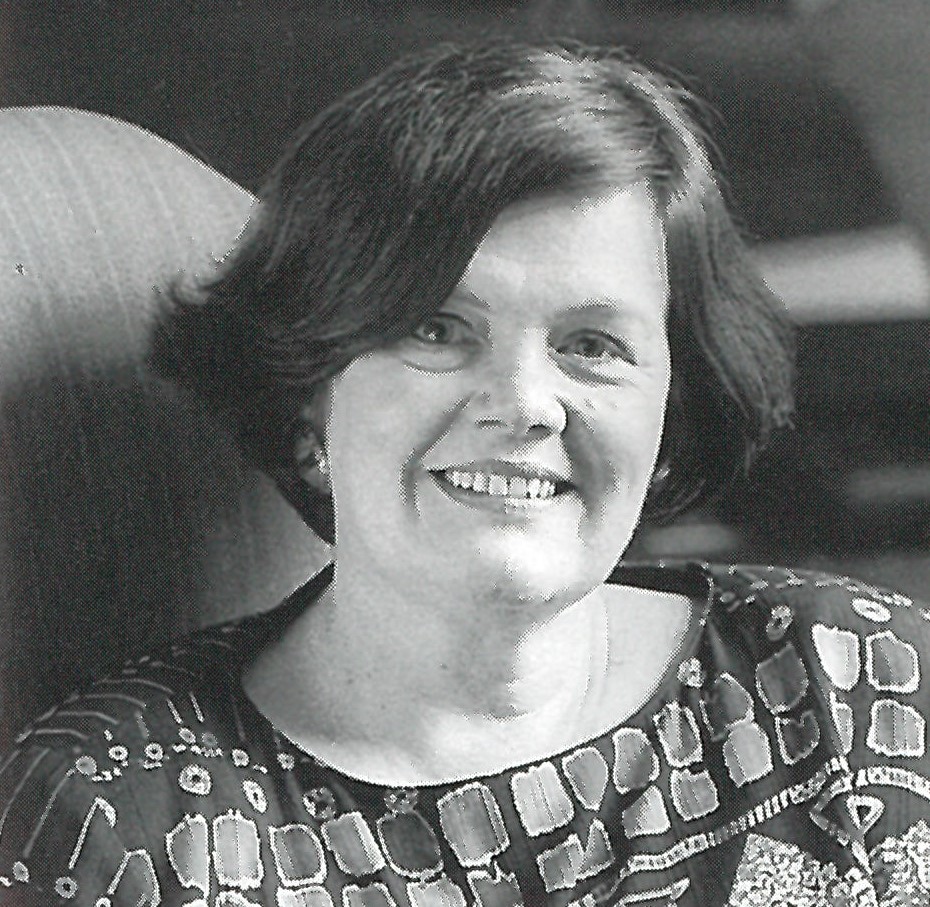
[/et_pb_text][/et_pb_column][et_pb_column type=”2_3″][et_pb_text admin_label=”text” _builder_version=”3.2.2″]
1995-2000: Bulletin again becomes a longer document about the direction of the school as a whole, including School’s Mission, Dean’s Message, program descriptions, and an extensive list of resources. The admission paragraphs state that SSW is
“open to both men and women who, in the judgement of the Committee on Admission, demonstrate the ability for graduate professional study. The School has a commitment to diversity and to the training of people of color. This commitment is reflected in a strong affirmative action stance. Candidates for admission must be graduates of accredited colleges and universities. No specific undergraduate major is required; however, completion of approximately 20 semester hours in the social, biological, and psychological sciences is normally required. In addition, it is preferred that candidates have at least one year of paid or volunteer experience in human services.”
1995-96–Removal of Plan B. The options become the regular degree path and the BSW Advanced Standing. This represents the change from students having prior experience and/or education to the vast majority having prior education and not experience.
MSW = five sessions of full-time study; field placement (56 quarter hours); Community Project; Research Project; 54 quarter hours of coursework
MSW for BSW Advanced Standing students = residence period (two sessions of full time study). Field placement (28 quarter hours). Research project (16 hours). 36 quarter hours of course work
1995-96–Bulletin has “Campus Life” section with Student Org, AIDS Coalition, Council for Students of Color, Feminist Alliance, Lesbian, Gay, Bisexual Alliance, Men’s Consortium, Students with Children, Support Groups
Admission paragraph returns. “The School has a commitment to diversity and to the training of professionals to meet the needs of people of color. This commitment is reflected in a strong affirmative action stance.” Prefer candidates with “one year of paid or volunteer experience in human services.”
Program of Advanced Study drops Third Year Certificate. Name changes to only the Ph.D. program
Students must take at least one course in each of four areas: Multiperson Modality Option, Field of Practice Option, Oppressed Population Option, and Advanced Social Theory Option
1996-97: Added to the other Campus Life Student groups mentioned in 1995 are the Bertha Capen Reynolds Society and Jewish Students Group. The queer group changed its name to Lesbian, Gay Bisexual, Transgendered Alliance.
1997-98: AIDS Coalition adds HIV to its name to become “HIV/AIDS Coalition”
[/et_pb_text][/et_pb_column][/et_pb_row][et_pb_row][et_pb_column type=”4_4″][et_pb_divider _builder_version=”3.2.2″ /][et_pb_text _builder_version=”3.2.2″]
We are pausing at 2000, not because relevant courses ended then, but because the catalogues are not as readily accessible.
[/et_pb_text][/et_pb_column][/et_pb_row][/et_pb_section]
